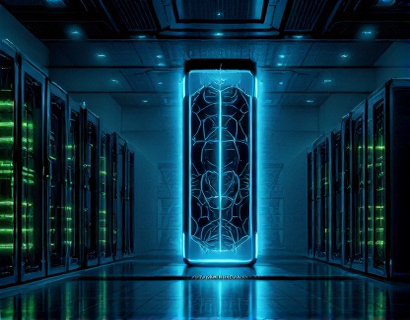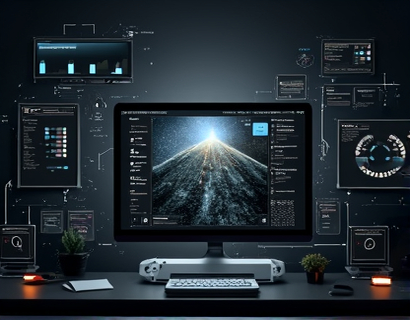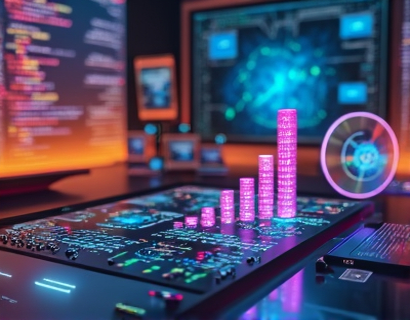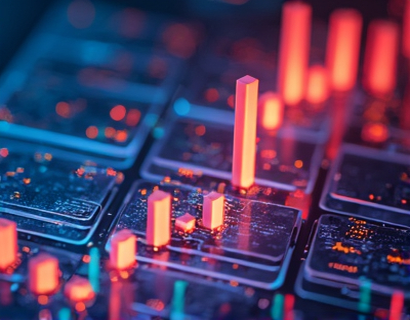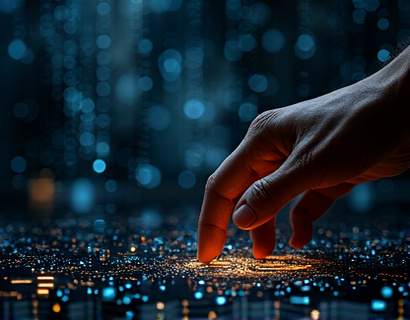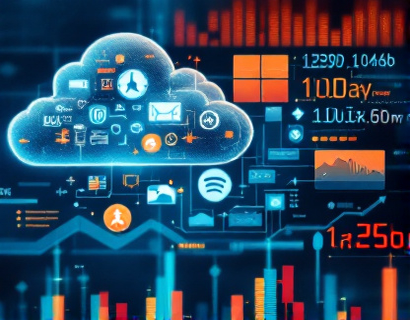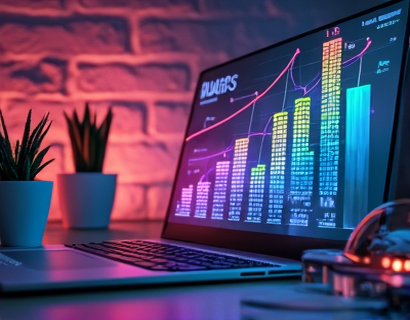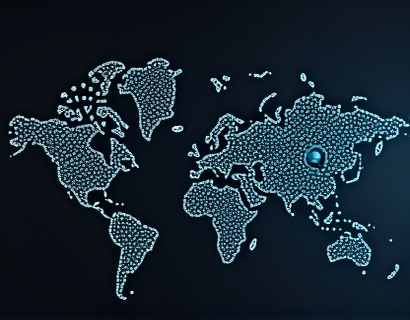Decentralized AI and Crypto: Transforming Digital Experiences in the Ucosystem Era
The intersection of decentralized technologies, artificial intelligence, and cryptocurrency is giving rise to a new paradigm in digital interactions. This era, often referred to as the Ucosystem, is characterized by innovative tech solutions that enhance user engagement and redefine the digital landscape. At the core of this transformation are decentralized AI applications powered by blockchain technology and cryptographic algorithms, offering unprecedented levels of security, transparency, and user control.
The traditional centralized model of digital services has been dominated by a few large corporations, often leading to concerns over data privacy, security, and user autonomy. Decentralized AI and crypto are challenging this status quo by distributing control across a network of nodes, eliminating single points of failure, and empowering users to manage their own data. This shift not only enhances security but also fosters a more inclusive and equitable digital environment.
Understanding Decentralized AI
Decentralized AI, or DAI, refers to artificial intelligence systems that operate on a decentralized network, typically a blockchain. Unlike traditional AI models that rely on centralized servers for data processing and model training, DAI leverages the collective computing power of a distributed network. This approach has several advantages.
Firstly, decentralization enhances data privacy. Since data is not stored in a single location, the risk of large-scale data breaches is significantly reduced. Users maintain control over their data, deciding who can access it and for what purpose. Secondly, DAI promotes transparency. All transactions and computations are recorded on the blockchain, providing an immutable and verifiable audit trail. This transparency builds trust among users and stakeholders.
Another key benefit is the democratization of AI resources. Traditional AI models require substantial computational power and financial resources, often accessible only to large corporations and well-funded research institutions. Decentralized AI platforms, on the other hand, allow individuals and small organizations to participate in AI development and deployment by contributing their computing resources and receiving rewards in cryptocurrency.
Cryptocurrency and AI Synergy
The integration of cryptocurrency with AI creates a powerful synergy that drives innovation in the Ucosystem. Cryptocurrencies, particularly those built on blockchain technology, provide a native token economy that incentivizes participation and rewards contributors. In the context of DAI, these tokens can be used to pay for computational resources, vote on protocol upgrades, or receive dividends from AI-driven services.
Smart contracts, self-executing contracts with the terms directly written into code, play a crucial role in this synergy. They automate the execution of agreements between parties without the need for intermediaries, ensuring that AI services are delivered as promised. For instance, a smart contract can automatically distribute AI training rewards to node operators based on their contribution, ensuring fair compensation and encouraging continued participation.
Enhancing User Engagement through Decentralized Applications
Decentralized applications (dApps) are at the forefront of transforming digital experiences in the Ucosystem. These applications run on blockchain networks and offer features that are not only more secure and transparent but also more engaging for users. Unlike traditional apps, dApps give users full ownership of their data and assets, and they can interact with the application in a more meaningful way.
One of the key features of dApps is their ability to create community-driven ecosystems. Users can participate in governance, propose new features, and vote on decisions that affect the application. This level of user involvement fosters a sense of ownership and loyalty, leading to higher engagement and retention rates. For example, a decentralized social media platform can allow users to own their content and receive tokens for creating and sharing valuable content, incentivizing active participation.
Moreover, decentralized gaming is another area where AI and crypto are converging to enhance user experience. In decentralized games, players can own in-game assets as non-fungible tokens (NFTs), which can be bought, sold, and traded on open markets. AI can be used to create more realistic and dynamic game environments, adaptive difficulty levels, and even AI-powered non-player characters (NPCs). The combination of ownership, transparency, and AI-driven content creates a more immersive and rewarding gaming experience.
Redefining Interactions in the Digital Landscape
The impact of decentralized AI and crypto extends beyond individual applications to the broader digital landscape. By redefining how interactions occur online, these technologies are paving the way for a more decentralized, user-centric internet.
One significant change is the shift from passive consumers to active participants. In the traditional internet model, users are often mere consumers of content created by others. In the Ucosystem, users can create, share, and monetize their own content, thanks to blockchain-based platforms that support decentralized content creation and distribution. AI can enhance this process by personalizing content recommendations, ensuring that users discover relevant and high-quality content tailored to their interests.
Another area of transformation is identity and authentication. Decentralized identity solutions, powered by blockchain and AI, allow users to create and manage their digital identities securely and privately. These solutions can verify user identities without relying on centralized authorities, reducing the risk of identity theft and fraud. AI can further enhance this by analyzing behavior patterns and detecting anomalies, adding an extra layer of security.
Challenges and Considerations
While the potential of decentralized AI and crypto is immense, there are several challenges and considerations that need to be addressed. Scalability remains a significant issue for blockchain networks, as they struggle to handle a high volume of transactions efficiently. However, ongoing developments in layer 2 solutions and more efficient consensus mechanisms are addressing these concerns.
Regulatory uncertainty is another factor that can impact the adoption of decentralized technologies. As governments and regulatory bodies begin to recognize the importance of these technologies, clear and supportive frameworks will be essential to foster innovation while protecting consumers. Collaboration between technologists, policymakers, and industry stakeholders is crucial in this regard.
Finally, education and awareness are key to widespread adoption. Many users are still unfamiliar with blockchain and AI concepts, which can hinder the adoption of decentralized applications. Providing accessible educational resources and user-friendly interfaces can help bridge this knowledge gap and encourage more people to explore and benefit from the Ucosystem.
Conclusion
The convergence of decentralized AI and crypto is revolutionizing the digital landscape, offering a more secure, transparent, and user-centric approach to technology. By leveraging the power of blockchain and AI, we are witnessing the emergence of innovative dApps that enhance user engagement and redefine interactions online. As the Ucosystem continues to evolve, it holds the promise of a more inclusive and empowering digital future, where users have greater control over their data and experiences.



